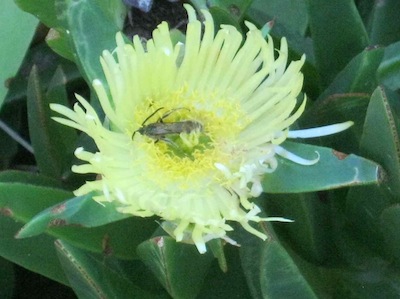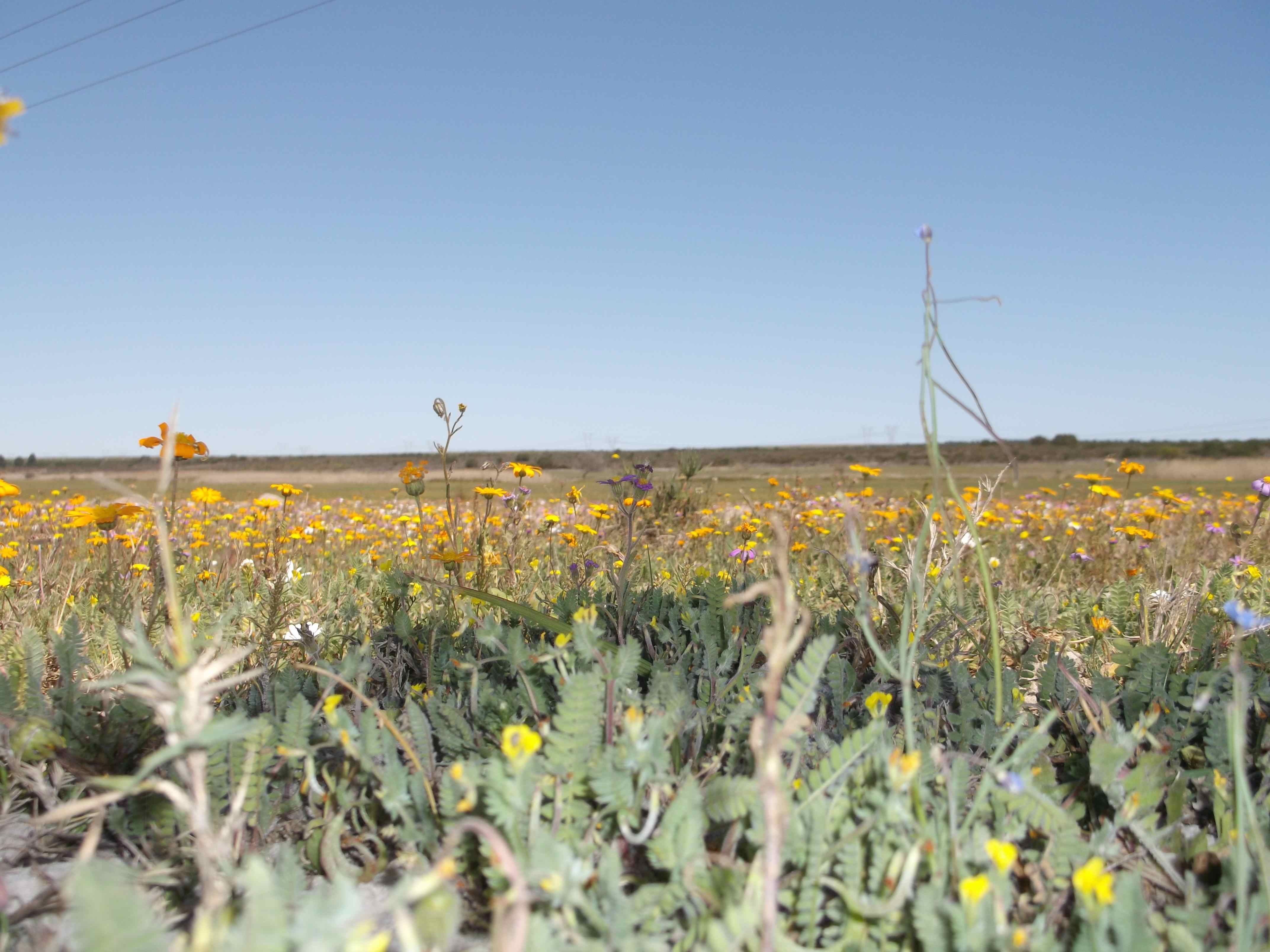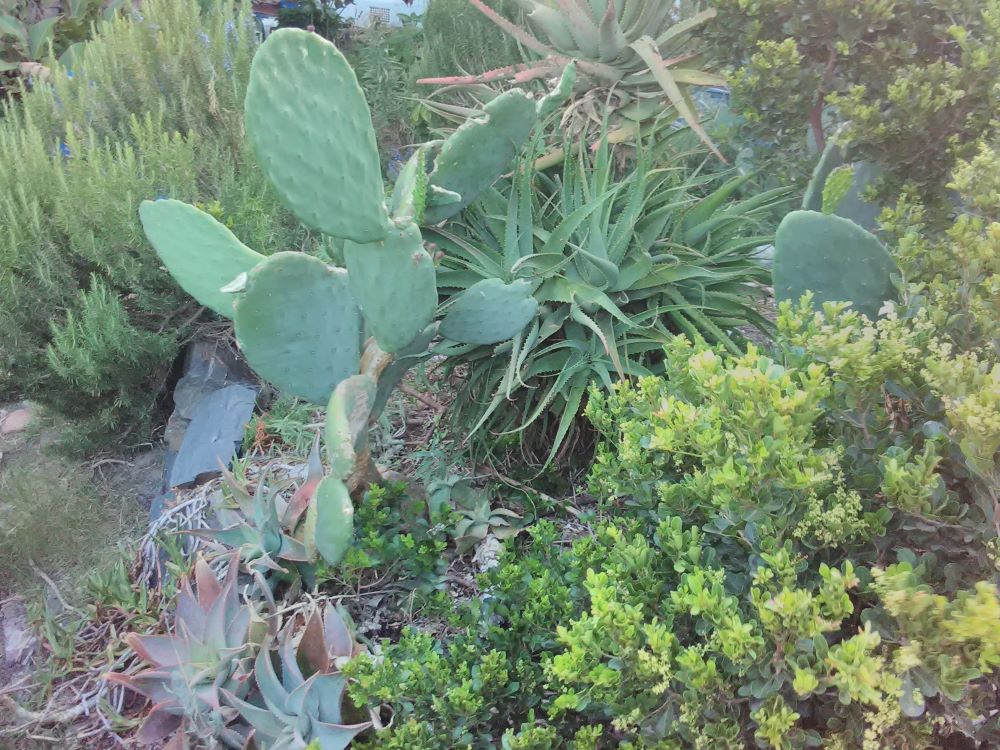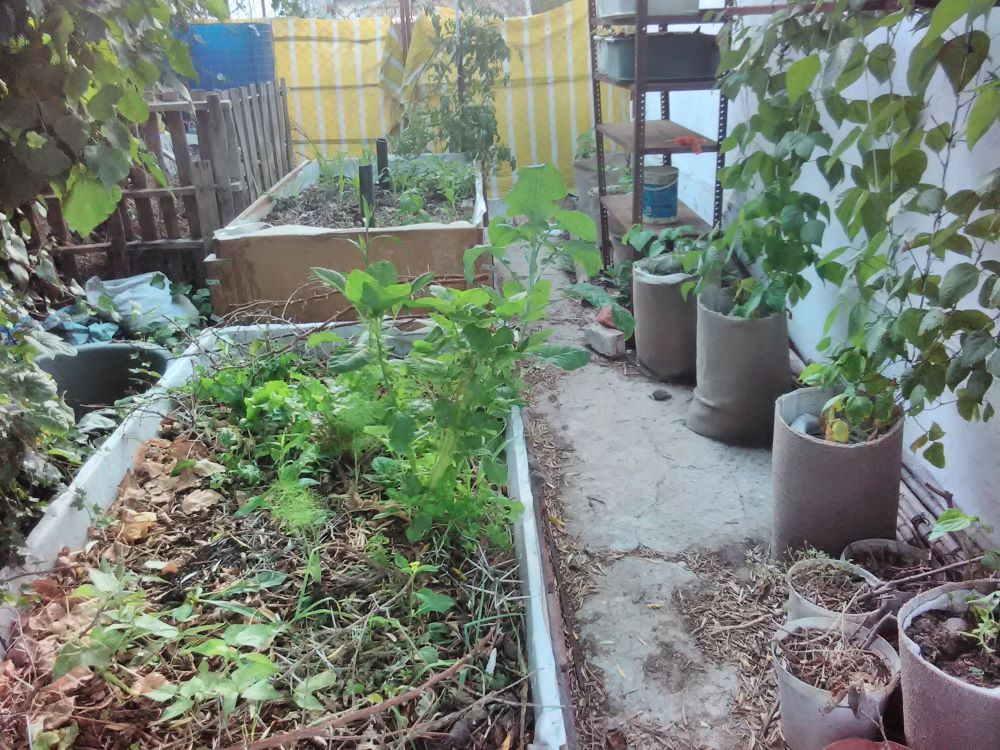Dear Reader, in this age of AI created content, please support with your goodwill someone who works harder to provide the human-made. Sign up at the top of the lefthand column or bottom of this page. You will receive my hand illustrated monthly newsletter RESTORE NATURE and access to the biodiversity garden design course as I write...and nothing else, I respect your time. I am also removing the advertizing as best I can as its become intrusive inappropriate and pays me nothing.
9 powers of the small wildlife friendly garden

Small wildlife friendly gardens add a healthy experience of beauty to the gardener’s life, but small is not just beautiful, it is powerful. Small gardens leverage a lot of the magic that small, local, diverse things do, and wildlife friendly gardens are extremely valuable in the struggle against environmental degradation.
Small gardens work ecologically to a large extent because they engage the miraculous power of plants, like all gardens do, but they have something more, that relates to their smallness, a special relationship with the gardener, that I'll get to soon, below.
A small wildlife garden is the location for many complex processes which lead to wonderful outcomes that are much greater than the sum of the inputs, and benefit human health, biodiversity and the planet. We do not fully understand how the magic of plants and soil works, but studies in the last decades are unpacking more and more and adding to older, more ancient knowledge. We will never know it all, much is still a mystery and therefore appears magical.
The small wildlife friendly garden is of course partially man made. But it harnesses natural forces, for the benefit of the gardener, to the extent of and often beyond their knowledge and skill. There are many possible reasons why small wildlife friendly gardens ‘work’ as healing forces globally. Below are some points which came to mind.
1. The area of land covered by small gardens
We normally think of biodiversity and ‘nature’ being safe guarded in ‘nature reserves’, but think of this: in some countries like the UK, private gardens alone take up more space than nature reserves. Taken together, if the area of land in private gardens exceeds the land area of nature reserves in a country, they have the potential to multiply the land one could term a sanctuary for life by many times.
If we count the area under private gardens, and add the small holdings, the parks, the road verges, urban gardening space like the Victory gardens in the English speaking realm, and the ‘Schrebergarten’ in the German world, an enormous amount of land is the total. All that remains to be done is get the private gardeners of the world on the side of ‘nature’ or other non-human life forms and diversity.
It may seem that your small plot is far from being adequate or comparable to a nature reserve, or wildlife sanctuary, but taken collectively, small private gardens can add up to enough space to significantly increase the land under conservation in many countries.
 Don't be intimidated by size. Your small wildlife friendly garden has a part to play.
Don't be intimidated by size. Your small wildlife friendly garden has a part to play.2. The special relationship between a gardener and a small wildlife friendly garden
The small garden involves a very special relationship which may not be reproduceable on commercial farms. The intimate relationship, and high ratio of person to land area, of gardeners to garden area, is a great advantage. It allows the kind of practices that profit based, large scale industrial farming cannot allow. It allows the gardener to garden sensitivity to which a very large garden creates barriers, through delegation of observation and practice to many people. The reality that small private gardens are usually neither profit making nor on display, makes them more likely to be nature friendly.
ALL THE LOVE GIVEN A SMALL GARDEN
The small urban garden’s disconnect from commercial goals allows the gardener to squander love, time, resources and labor on the garden, as well as to experiment at no great cost. Thus the garden may reap the benefit of more work and care on certain tasks, when this level of input would be less feasible where only short term profit is the goal. For example, gardeners often make their own compost, and it can be labor intensive, though I’ve got articles about easier ways of doing it. The benefits to soil life are enormous, because of the compost’s rich microbial life, but when scaled up, the application of compost could be prohibitively expensive for some farmers. Another example is that a gardener may create mixed plantings and the harvesting process may be hands-on and complex. Mixed plantings may be harder to manage where harvesting machinery is used.
 Edible, medicinal, aromatic. A mix of native and indigenous vegetation thriving under the gardener's close management, when in the wild there would be 'invasion'.
Edible, medicinal, aromatic. A mix of native and indigenous vegetation thriving under the gardener's close management, when in the wild there would be 'invasion'.Unfortunately even small gardens can be destructive through clearing, digging and planting exotics, and waging war on nature, but more of the that on another page. An individual tending a private garden has the potential to use good practice and give the land the kind of attention and thought it needs, and allow space for things that don’t turn a profit but benefit mother earth. This can’t be said of the type of industrial agriculture in which everything is secondary to profit in the short term. The private garden isn’t usually there to turn a profit, and that is its saving grace, in an earth saving project.
‘NEGLECT’ BENEFITS THE SMALL WILDLIFE FRIENDLY GARDEN
The lack of profit motive allows the gardener to neglect some tasks to allow nature more room. With regard to size, a very large garden being on display often forces the gardeners to exert a high level of control on the garden. But in a small garden the gardener may neglect weeds because these weeds are edible, or support some type of insect whose presence is desirable. Allowing weeds to flourish on a commercial farm may mean that the planted crop does not reach full potential and the farmer cannot fulfil the demands of his business. Allowing some weeds to flourish in a small garden will teach the gardener about the work weeds are doing on soil, and the wide boundaries of companion planting. The gardener can allow this uninvited diversity to suppress pest attacks. By contrast, a farmer may not allow himself the luxury of this learning process, as it may all seem risky in the short term, and this may mean they continue to see weeds in an extremely negative light, and the temptation to use the full arsenal supplied by agrochemical companies just to get them out of the way will be great. A small gardener may be able to allow a certain percentage of his food to be eaten by other life forms, which in turn sustain other life, and make the small wildlife friendly garden rich in biodiversity.
3. The number of gardeners with small gardens
There are millions of people with small gardens around the world in every country and every city. They are a very diverse group but if they were to coordinate somehow to work against climate change they, through sheer numbers, could create a shift in thinking and spread knowledge about the threat facing our world. Because of their numbers, gardeners can form a very powerful bloc of people to act publicly together on climate and biodiversity issues.
4. The massed brain power of gardeners
The great sea of nature friendly gardeners, millions of people around the world in every country, spend a lifetime learning how to work with nature, but the lessons learned disappear with the rolling generations. I hope we’ll catch just a fraction of this knowledge before it slips away, because knowledge is not permanent. It is forgotten, and the mind’s capacity to hold it cannot be taken fore granted. I hope this website will be like a net, and catch some of the useful chunks of experience. I’ll contribute my best and I hope others will add to it.
I believe because most gardeners love plants. They have been humbled intellectually by the ‘disobedience’ of plants in the face of human agendas. Their hearts are open and they are already deeply in awe of nature’s mysteries.
Gardeners themselves form a vast nation of people with plant knowledge. The minute they begin to think more about biodiversity there will be a sea change in the world. Conserving biodiversity and growing food and flowers need not clash with each other, if you use a gardening system geared to enhance both.
 Raised beds and trellises on the walls make the best of cramped urban space and even cool the house. All the containers recycled.
Raised beds and trellises on the walls make the best of cramped urban space and even cool the house. All the containers recycled.5. The future urbanization of the world
The earth is undergoing massive urbanization as people move into cities for economic and other reasons. Its projected that by 2050 more than half of the people in the world will live in cities, and by implication, urban space will take up more room in every country. The small wildlife friendly garden will be a very necessary way of ameliorating the degradation of the urban landscape brought about by covering the earth with hard surfaces and buildings, and the clearing of natural vegetation and killing off of the animals in the urban environment that inevitably occurs.
6. Human experience and small wildlife friendly gardens
At the thought of so many urban people in the future, one has to mention the psychological effect on humans of the sight of natural biodiversity. Firstly, it has been found that green space calms the mind, probably along ancient pathways that predate us settling in cities millennia ago. Studies at the University of Berkeley California revealed that the sight of a tree increased generosity or prosocial behavior, compared to the sight of a building, and another study showed that in inner cities with more greenspace there is lower crime, more civic responsibility and cooperation in the community and less stress related illness.
Building on this idea that the sight of plants is enough to affect our psyche, I suggest that the sight of biodiversity has an even stronger effect. Going from my own inner experience, all green space is not alike, and the sight of plant diversity, so natural that it verges on wildness is much more calming than the sight of a pine or some other plantation of trees, or large lawns, and I’m sure many people feel this in their gut too. After all, if early man spent so much time in the southern Cape in the Fynbos region, one of the greatest global plant diversity hotspots, then we may have adapted to be very attracted to the sight of diverse vegetation. Diversity promised ancient man food security, through offering a greater range of possibility, so it should not be surprising that we are still drawn to it and it invokes in us a transcendent calm.
The kind of food grown in a diverse environment with its richly diverse soil microbiome also is far more nutrient dense, and people in cities far away from their country vegetable gardens suffer from poor nutrition. In addition a semi wild garden's food will contain more of the life preserving phytonutrients known to promote longevity and health into great age. Think of the savings the state could make by growing organic and ‘wild’ food in cities and lowering the rates of degenerative disease.
 A wild corner of the garden with a lot of our famously diverse aromatic native plants.
A wild corner of the garden with a lot of our famously diverse aromatic native plants.7. Cities may often be close to biodiversity hotspots
The founders of cities may have chosen places with exceptionally good climates, available water, and all the ecosystem services provided by these specially abundant places. This would also mean that before the city was created, the ecosystem was flourishing, and may have been very diverse, so that cities may often be built right on top of diversity hotspots, as is the well known case of the city of Cape Town. Urban gardening that conserves as much biodiversity as possible is therefore vital to the biodiversity of whole countries.
8. Carbon sequestration is most effective close to the source of emissions.
The best place to sequester carbon is close to the place of emission, and its been found that trees in cities planted close to road ways are more effective at clearing the pollution in cities than those planted further away. Greening up cities will lessen the task of sequestration for other plants in the rest of the environment.
9. Climate and biodiversity benefits of the plants in a wildlife friendly garden.
Because the wildlife friendly garden has a greater diversity of plants, it not only supports animal species diversity such as insect diversity, but has all kinds of climate benefits created by plants (see the section on the power of plants here).
The climate benefits of plants are things like cooling with shade,
cooling by the latent heat of evaporation as the plants transpire
water into the air, cooling by healing
the soil
because the hydrological
cycle which cools landscapes
depends very
much on healthy
soil. Thick
plant cover has the ability
to attract moisture laden winds off the sea, and to
release
volatiles and microbes that help
in the formation of clouds and raindrops,
leading to cooling rain
which clears the air and allows radiant heat to escape from the earth
at night. Healing the hydrological cycle may allow dried
up rivers to run
again. Then last
but not least there is the
sequestration of carbon in
the roots and other tissues of
plants, and in the healthy
soil in wild gardens. According to Kiss the Ground, we can sequester
more carbon in soils than by planting trees. Soil is the next
greatest terrestrial carbon sink after wetlands.
Other benefits provided by the plants' ability to increase soil health is that healthy soil can prevent flooding and erosion of our precious arable soil. An indirect climate benefit is that through growing food where it is eaten, emissions created by transportation can be cut. Another benefit is that by using ecological growing methods one avoids the prodigious use of fossil fuels needed for ploughing and creating fertilizers and biocides.
I'm here to help you build a small wildlife friendly garden
A small wildlife friendly garden’s magic has plant diversity and good plant cover as its foundation, but there are more mysteries to these mechanisms than we'll ever know. However, I hope I’ve persuaded you how important our little gardens can be for the environment, for cities, and for humans. If you’re excited and inspired, the next question would naturally be “How do I create a diversity and climate friendly garden ?”
The aim of this website is to help answer this question, to share my quest with you and to add knowledge from many other sources. You can have a look at my regenerative gardening blog as a start. Integrating wildlife and biodiversity gardening with intensive food growing became a new focus in my endeavor over the last year. I hope to deepen what is on offer with time, always giving a lot of space to biodiversity. Below you'll find a sample of articles that may help.
small wildlife garden links
general links
home page with links to all the topics
Restore Nature Newsletter
I've been writing for four years now and I would love to hear from you
Please let me know if you have any questions, comments or stories to share on gardening, permaculture, regenerative agriculture, food forests, natural gardening, do nothing gardening, observations about pests and diseases, foraging, dealing with and using weeds constructively, composting and going offgrid.
Your second block of text...
SEARCH
Order the Kindle E-book for the SPECIAL PRICE of only
Prices valid till 30.09.2023
Recent Articles
-
garden for life is a blog about saving the earth one garden at a time
Apr 18, 25 01:18 PM
The garden for life blog has short articles on gardening for biodiversity with native plants and regenerating soil for climate amelioration and nutritious food -
Cape Flats Sand Fynbos, Cape Town's most endangered native vegetation!
Apr 18, 25 10:36 AM
Cape Flats Sand Fynbos, a vegetation type found in the super diverse Cape Fynbos region is threatened by Cape Town's urban development and invasive alien plants -
Geography Research Task
Jan 31, 25 11:37 PM
To whom it may concern My name is Tanyaradzwa Madziwa and I am a matric student at Springfield Convent School. As part of our geography syllabus for this
"How to start a profitable worm business on a shoestring budget
Order a printed copy from "Amazon" at the SPECIAL PRICE of only
or a digital version from the "Kindle" store at the SPECIAL PRICE of only
Prices valid till 30.09.2023







